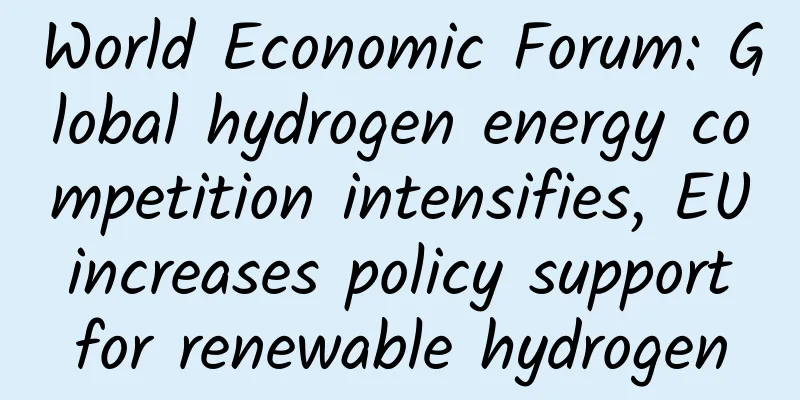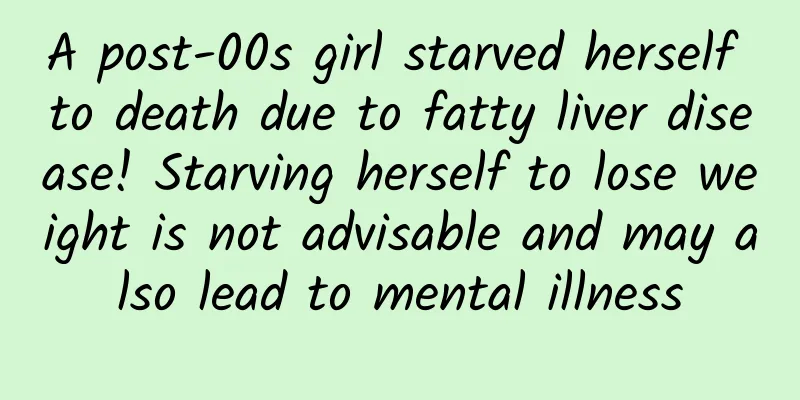World Economic Forum: Global hydrogen energy competition intensifies, EU increases policy support for renewable hydrogen

|
China, the United States and Japan have all introduced industrial policies to accelerate the development of clean hydrogen energy, and the European Union is also rapidly implementing policy measures to accelerate the production and use of renewable hydrogen. Following the “Fit for 55” package and the subsequent “REPowerEU” energy plan, the EU is rapidly pursuing policy measures to accelerate the production and use of renewable hydrogen, making it one of the frontrunners in the global race for a hydrogen economy. For the EU, renewable hydrogen will play a key role in accelerating the transformation of the EU's energy structure, which has been accelerated by the Russia-Ukraine conflict. Most recently, the long-awaited Renewable Fuels of Non-Biogenic Origin (RFNBO) Authorization Act was passed in June. This landmark legislation clarifies under what conditions hydrogen and hydrogen-based fuels can be classified as non-biogenic renewable fuels and determines the calculation method for the associated greenhouse gas emission reductions. While not all parties are completely satisfied with the Act’s provisions and limitations, the decisions contained in the Act do provide investors with the regulatory clarity they have been calling for. At the beginning of 2022, the World Economic Forum, in collaboration with Accenture and the International Renewable Energy Agency, published the Enabling Measures Roadmap for Green Hydrogen Europe, which aims to identify the key enablers for scaling and commercializing the renewable hydrogen market. In light of recent developments, the World Economic Forum and Accenture have collaborated to publish an updated version of their previous work, renamed the Enabling Measures Roadmap for Renewable Hydrogen. The Roadmap is valuable for understanding the latest policy developments, funding and initiatives in Europe, and for assessing progress towards achieving a hydrogen economy at scale. How can the EU maintain its competitive position between China, the United States and Japan? To remain competitive in the rapidly evolving hydrogen sector, the EU must confront the wider global context, which reinforces its resolve to act. For example, in the United States, a package of legislation including the Infrastructure Investment and Jobs Act (US$8 billion for clean hydrogen hubs) and the Inflation Reduction Act (tax breaks of up to US$3/kg for low-carbon hydrogen) provides significant financial support for cleaning up existing hydrogen value chains and building new ones. China recently announced the "Medium- and Long-Term Development Plan for the Hydrogen Energy Industry", which aims to decarbonize existing hydrogen-intensive industrial clusters and expand green hydrogen production by 2030. Therefore, it is necessary to discuss China's development in the field of green hydrogen production in more detail. Similarly, Japan's Carbon Neutral Green Growth Strategy 2050 identifies low-emission hydrogen as a key technology in key sectors such as power generation, industry and transportation. So where does the European Union stand? The EU’s renewable hydrogen strategy consists of three key components, and listed below are some of the main highlights of the updated version of the European Roadmap for Support Measures for Renewable Hydrogen. 1. To realize the maximum value potential of hydrogen, we must focus on the role it plays in the broader energy system EU hydrogen policy is part of a system-wide policy action to decarbonize all EU demand sectors through a package of policies including Fitfor55, REPowerEU and the Green Deal Industrial Plan for a Net Zero Age. What these policies have in common is that they all deal with the unique role of hydrogen vis-à-vis other energy carriers, such as electrification and (advanced) biofuels. By setting targets for the use of renewable energy and RFNBO (renewable fuels of non-biological origin), i.e. RED II targets, these policies define the responsibilities of each of the main energy carriers. For example, hydrogen energy is widely seen as a means to reduce carbon emissions in hard-to-reduce sectors such as industrial emissions and heavy-duty transport, mainly including blending (short-term measures) and fuel substitution (medium- to long-term measures). The EU’s Critical Raw Materials Regulation (CRMA) takes into account the resource requirements of other resource-intensive technologies such as batteries and proposes a range of measures to ensure the EU has secure, diversified, affordable and sustainable access to supplies of critical raw materials. 2. Greening the existing hydrogen value chain is an indispensable cornerstone to achieve the EU’s renewable hydrogen production and import targets (20 million tonnes by 2030) The EU has set an ambitious goal: by 2030, renewable hydrogen production will reach 10 million tons, imports will reach the same 10 million tons, and total use will reach 20 million tons. For reference, Europe's current hydrogen demand is 8.7 million tons per year. Given that 99.9% of demand is mainly met by grey hydrogen production, greening the existing hydrogen energy chain will become an indispensable cornerstone to achieve the EU's renewable hydrogen goals. The huge scale of the existing hydrogen energy market provides opportunities for reducing carbon emissions, while also providing a scalable procurement market for large-scale electrolyzers. The current hydrogen energy market demand mainly comes from refineries (4.4 million tons per year), accounting for 50% of total demand, mainly for hydroprocessing and hydrocracking. The second largest sector is the synthetic ammonia production industry (2.5 million tons per year), accounting for 29% of total demand, mainly for the fertilizer industry. The production of methanol and other basic chemicals accounts for 13% of hydrogen demand (1 million tons per year). Given that current hydrogen energy applications are mainly concentrated in large-scale industrial fields, there is an opportunity to closely integrate supply and demand through industrial clusters to achieve risk sharing and economies of scale, including centralized procurement. While greening the current hydrogen value chain is important, we also face the challenge of enabling new applications of renewable hydrogen. Total hydrogen demand by application in 2020. | Image source: Hydrogen Europe 3. Break the deadlock in final investment decision In order to enable Europe’s clean hydrogen projects to make significant progress in production, transport and use, it is essential to ensure that these projects can reach the final investment decision stage. For reference, Europe has announced that it will produce 13 million tons of clean hydrogen per year by 2030. By achieving clean hydrogen production, import and end-use targets and establishing corresponding funding mechanisms, Europe can continuously enhance the attractiveness of the hydrogen value chain development. The European Hydrogen Bank's approach can be used as a reference. One of its main responsibilities is to make up for the cost gap of renewable hydrogen energy through bidding and provide financial support for related projects to help them conduct commercial verification. In order to increase investor certainty, some EU member states (such as Germany and the Netherlands) have adopted additional CAPEX and OPEX subsidy plans beyond the EU policy framework, and plan to make hydrogen energy terminal applications an obligation rather than a goal. In order to widely promote and rapidly popularize renewable hydrogen terminal applications within the EU, it is necessary to strengthen and coordinate relevant measures outside the EU Member States. What is the future direction of clean hydrogen energy? There are similar roadmaps of support measures outside the EU to accelerate the adoption of clean hydrogen, with countries such as China and Japan also participating. In addition, roadmaps for India, the Middle East and Latin America are also about to be released, between the 28th United Nations Climate Change Conference (COP28) in November this year and the World Economic Forum Annual Meeting in January next year. In addition to the European roadmap, plans in other regions will also show similar characteristics, namely, launching key policy initiatives aimed at promoting the rapid development of the clean hydrogen economy and providing a unique perspective on global clean hydrogen development based on local conditions. Author Noam Boussidan Head of Industrial Ecosystem Transformation, World Economic Forum Catherine O'Brien Accenture Industrial Decarbonization and Hydrogen Leader Photo editor: Bo Lin |
<<: Can Douyu and Huya rely on cloud gaming to return to the top?
>>: Microsoft wants everyone to happily forget Windows 8
Recommend
Business models are being explored, but Android game consoles are not up to the task
The Spring Festival holiday has always been a tim...
From IP to CP: New Brand Operation Methodology
With the rise of Taobao platforms, a large number...
In addition to ceftriaxone, do not drink alcohol when taking these medicines
After Laba, it is the New Year, when friends and ...
Bantang Mengyi Advanced Writing Camp, build a writing money printing machine from 0 to 1, worth 5999 yuan
Bantang Mengyi Advanced Writing Camp, build a wri...
How dirty is the water in the water dispenser?
One minute with the doctor, the postures are cons...
Helmets are far from enough. Virtual reality is about comprehensive strength.
In 2015, with the bombardment of information from...
B station product analysis!
At the just-concluded 9th China Internet Audiovis...
Floating Menu 6.0.7 shortcut software
【Software Description】 The floating menu is a too...
99% of brand promotions are just scams?
What brands should do is to open the "door&q...
Is it reliable to use hot water to scald tableware?
Friends, is there anyone around? Do you like to s...
In the “post-search era”, will Baidu rely on self-driving cars to survive?
According to foreign media reports, the reason wh...
Remember to throw away the package you have opened in time! Otherwise, cockroaches will target your home
Let me ask you first: after you unpack the packag...
Revealed! Why do some people's ashes appear colorful after cremation?
Follow "Body Code Decoding Bureau" (pub...
250 essential terms in advertising and marketing
In advertising companies (especially internationa...
What knowledge and stories are behind eating Qingtuan during the Qingming Festival?
As spring comes and Qingming Festival approaches,...









